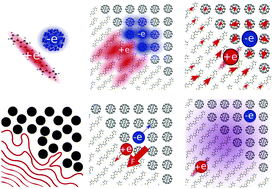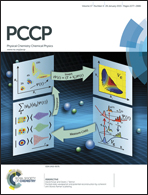Models of charge pair generation in organic solar cells
Abstract
Efficient charge pair generation is observed in many organic photovoltaic (OPV) heterojunctions, despite nominal electron–hole binding energies which greatly exceed the average thermal energy. Empirically, the efficiency of this process appears to be related to the choice of donor and acceptor materials, the resulting sequence of excited state energy levels and the structure of the interface. In order to establish a suitable physical model for the process, a range of different theoretical studies have addressed the nature and energies of the interfacial states, the energetic profile close to the heterojunction and the dynamics of excited state transitions. In this paper, we review recent developments underpinning the theory of charge pair generation and phenomena, focussing on electronic structure calculations, electrostatic models and approaches to excited state dynamics. We discuss the remaining challenges in achieving a predictive approach to charge generation efficiency.

- This article is part of the themed collection: Charge Generation Mechanism in Organic Solar Cells

 Please wait while we load your content...
Please wait while we load your content...